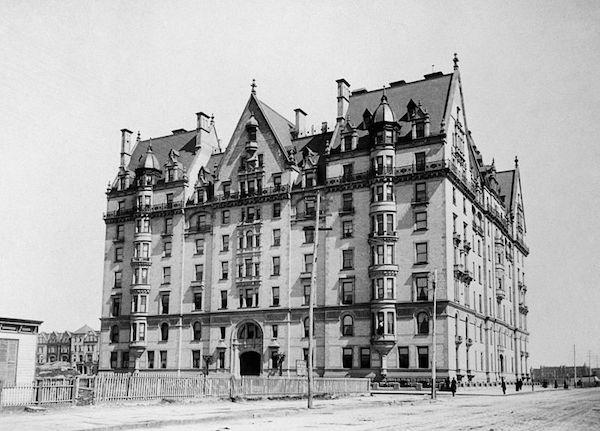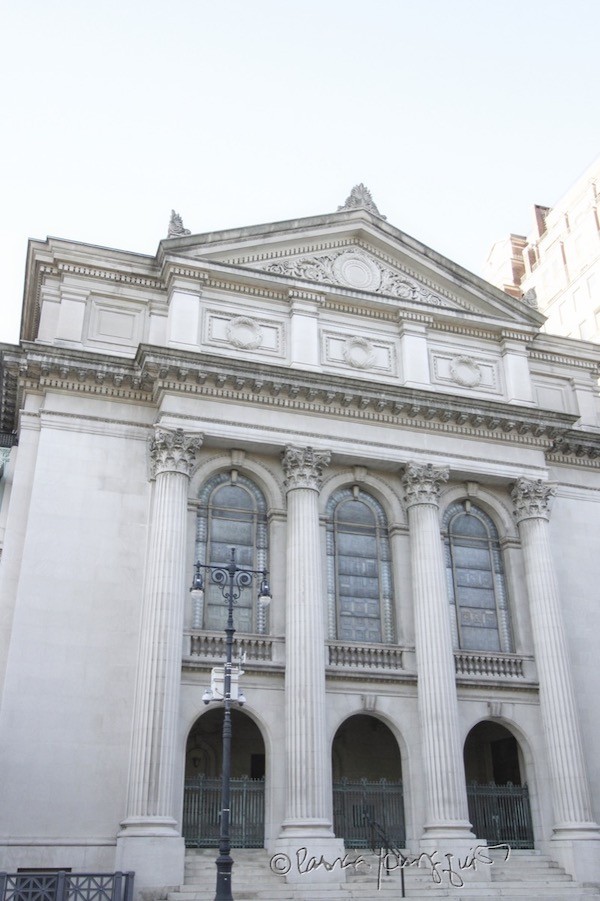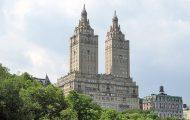Central Park West is home to some of the oldest buildings in the city. The architecture found along this stretch of Manhattan is fantastically well-preserved.
As luxurious residential complexes, museums and religious institutions were built, the neighborhood quickly grew to become one of the most-sought after areas in the city. Read below to discover some super old buildings!
Advertisement
The Dakota
1 West 72nd Street
The Dakota is not only one of the most emblematic buildings on the Upper West Side, but in fact all of NYC, and the first one that comes to mind for many New Yorkers when asked about the city’s rich history and celebrity addresses. The iconic apartment building was built in 1884 by Henry J. Hardenbergh. It was inspired by the architecture following the German Renaissance.
The building acquired its name because of its removed location, far from the center of the city. At the time of its construction, The Dakota was the only visible building looking north from Central Park. Because of its mysterious Gothic appearance, the building has been featured in several films and novels. It houses 65 luxurious apartments that differ in size and design making all of them unique and irreplaceable. The Dakota is a designated National Historic Landmark, and residents and visitors alike keep being enchanted by the building’s timeless beauty.
Find out who used to live at The Dakota!

The Dakota, circa 1890. Public domain via Wikimedia Commons
Congregation Shearith Israel
2 West 70th Street
Congregation Shearith Israel is a New York City landmark which was originally designed by architects Arnold William Brunner and Thomas Tryon. The congregation was built in 1897 and was modeled after the Classical Revival style.
One of the oldest buildings on the Upper West Side, and in fact the oldest American-Jewish congregation in the entire country, the synagogue was founded by immigrants who hailed from Spain and Portugal woh crossed the Atlantic in search for a better life. They wanted to build a place of worship to make New York feel like their proper new home. Louis Tiffany designed the synagogue’s main sanctuary as well as the magnificent stained-glass windows.

Advertisement
American Museum of Natural History
Central Park West & 79th Street
Influenced by the architecture of the Gothic and Romanesque periods, the original AMNH was founded in 1869 and built between 1874 and 1877. The museum’s spectacular design was implemented by Calvert Vaux and J. Wrey Mould. They followed the architecture Central Park displayed at the time.
The museum is one of the largest in the world and features several buildings. The second one was designed by J Cleveland Cady and comes with a brownstone exterior that borrows elements from the Neo-Romanesque movement. This building also has a series of towers that stand at over 150 feet each. There are several ways in which visitors can access the museum and one of them leads down into a foyer where a canoe from the Northwest Coast Indian tribe lies suspended from the ceiling.

photo via NYPL Digital Collections
Fourth Universalist Society of New York
4 West 76th Street
This beautiful church was built in 1898 by William A. Potter. He was influenced by the design of the Magdalen Tower and took pointers from the English Gothic style for the creation of this building. It was quite a sharp contrast to the more classical and traditional styles that dominate along Central Park West.
Originally referred to as Friends of the Final Restitution, the building was later changed to Church of the Divine Paternity. Even though NYC used to have seven Universalist societies at its disposal, only one remains today. Indeed, the Fourth Society is the last Universalist congregation of its kind still standing in the city.

photo by Team Boerum
Advertisement
Ethical Culture School
33 Central Park West
The Ethical Culture School was built in 1902 by noted architects John Mervin Carrere and Thomas Hastings. The school was ready to open its doors to students two years later. From the very beginning, the school was founded upon the virtues of social justice, racial equality, and intellectual freedom. A place where students of all backgrounds and walks of life could feel welcome and at home.
As a private independent school and member of the Ivy School Preparatory League, many alumni have gone on to find successful careers. Past notable alumni include Oscar-winning director Sofia Coppola, journalist Barbara Walters, and musician Andy Stein. Students who attend Ethical Culture School are continually exposed to philosophical events that are aimed towards minds that like to be spiritually and creatively stimulated.

photo by David Shankbone




I love posts like this one. I couldn’t believe that the Congregation Shearith Israel is the oldest congregation in NYC, considering that there were many jewish people in the lower east side prior to the year it was constructed. I am going to spend a couple of hours researching this topic to learn more.
Thanks!
There are a large number of buildings left off this list that are older than some of the ones included. Among the missed are: St. Michael’s Episcopal church at 99th and Amsterdam, built 1890-1891 and with the most beautiful Tiffany interior and windows in NYC, Holy Name of Jesus Catholic church at 96th and Amsterdam, dedicated 1900 and with a beautiful English-medieval style hammer beam vault and the beautiful First Church of Christ Scientist at 96th and Central Park West, completed in1903 by Carrere and Hastings and with windows by John LaFarge. All are landmarks. Perhaps the author doesn’t see the 90s as part of the UWS?